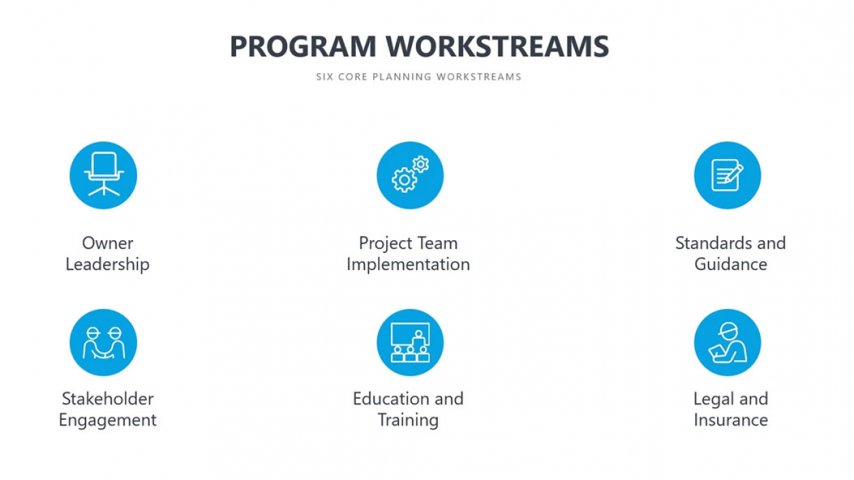
The National Institute of Building Sciences has developed an implementation and launch plan for the U.S. National Building Information Management (BIM) Program, entitled The Foundation for Digital Transformation of Capital Facilities and Infrastructure.
The aim: To achieve a new level of industrial efficiency through digital transformation. An overview of the launch plan recently was presented to industry leaders at an executive roundtable to accelerate ongoing efforts from innovative and forward-thinking organizations.
A critical issue in the U.S. construction industry is its low level of digitalization, which prevents it from transforming lifecycle work processes to be more efficient, less expensive, more resilient, and safer to build and maintain. This is the focus of the U.S. National BIM Program.
The program expands upon the existing and ongoing work of NIBS BIM Council, as well as various other initiatives in the industry. While there are many efforts throughout various organizations, the program provides a vehicle for collectively and collaboratively achieving information lifecycle improvements for both facilities and infrastructure by convening a broad array of stakeholders across the industry. In so doing, the program aims to help leverage the recent major legislation that provides infrastructure and climate investments in the U.S.
NIBS began the planning process for the National BIM Program last year, meeting and working with industry leaders. Since then, many volunteers and NIBS staff members have worked to develop the implementation plan that includes key activities and an estimated budget for the first five years. The second executive roundtable was a key milestone in advancing the program.
“Many national and international initiatives focus on BIM standardization to support digital transformation throughout the entire life cycle of designing, constructing, and operating the built environment,” said Stephen T. Ayers, FAIA, Interim CEO of NIBS, in a release. “The U.S. National BIM Program will be successful through collaboration between the public and private sectors and across the diversity of project stakeholders, namely owners, designers, constructors, suppliers, vendors, and other involved parties.”
To aid in the implementation and launch of the U.S. National BIM Program, AEC subject matter expert Johnny Fortune joined NIBS in June. Fortune serves as Director of the U.S. National BIM Program.
Fortune said “a key component of the Program is to reduce the information deficit experienced by many owners of facility and infrastructure projects. To do that, we must transform lifecycle information management practices. The next steps include securing additional resources and establishing workgroups to operationalize different aspects of the plan.”
The full implementation plan and additional information is available on usbimprogram.nibs.org.
U.S. National BIM Program Background
The construction industry is a significant contributor to the U.S. economy, employing more than seven million people to create or renovate nearly $1.4 trillion in buildings, infrastructure, and other built assets each year.
But the industry has yet to enjoy the productivity improvements of the digital age, averaging only 1% productivity growth in the past 20 years. The industry noticeably has been slow to leverage digital delivery and operations.
BIM provides the foundation for transformation. Leading owners, designers, and builders throughout the United States have been global innovators in BIM adoption. Still, the lack of a consistent digital delivery framework and the supporting infrastructure for funding and implementation have limited advancement to the next stages of BIM and digital transformation.
About the NIBS BIM Council
The BIM Council has focused on capturing the requirements of U.S. building owners to document best practices and provide guidance on the adoption of digital technology to increase productivity and performance. Examples include the United States National CAD Standard (NCS), the National BIM Standard-United States (NBIMS-US), the National BIM Guide for Owners (now a Draft Standard with ASHRAE) , and Construction to Operations Building information exchange (COBie) Specification. For more information, visit the Building Information Management Council.




